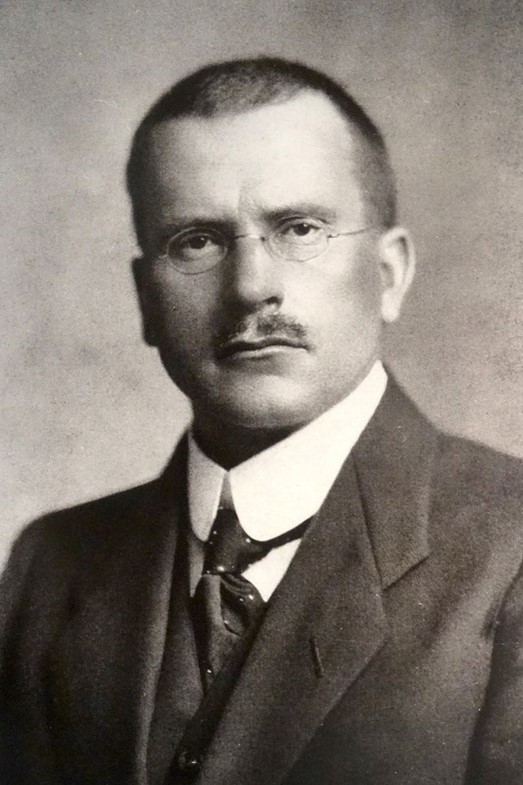7 Carl Jung’s Archetypes
Carl Jung: Archetypes and Dreams

Reading: Carl Jung “The Archetype in Dream Symbolism” In Man and His Symbols. Pdf provided in Canvas.
Vocabulary (Merriam Webster Dictionary):
- archetype: from Greek arche (beginning) and typos (imprint)—see definitions of the four main archetypes below. An inherited idea or mode of thought in the psychology of C. G. Jung that is derived from the experience of the race and is present in the unconscious of the individual
- psychoanalysis: a method of analyzing psychic phenomena and treating emotional disorders that involves treatment sessions during which the patient is encouraged to talk freely about personal experiences and especially about early childhood and dreams.
- collective unconscious: the inherited part of the unconscious that especially in the psychoanalytic theory of C. G. Jung occurs in and is shared by all the members of a people or race
- tabula rasa: Latin, “blank slate.” Jung believed that human infants were born with minds that were not conscious but were also not blank slates.
- postmodernism: of, relating to, or being any of various movements in reaction to modernism that are typically characterized by a return to traditional materials and forms (as in architecture) or by ironic self-reference and absurdity (as in literature)
Background
Carl Jung, a Swiss psychiatrist, is considered the founder of analytical psychology, which focuses on the impact of symbols and archetypes on the unconscious mind. Jung worked as a contemporary of Sigmund Freud, who is often called the father of modern psychiatry. While Jung was undoubtedly influenced by Freud and promoted his ideas about the self, Jung disagreed with Freud’s theories about sexual desire.
Jung believed in both an individual and a collective unconscious (a term he invented). The collective unconscious, which Jung defined as structures of individual unconscious minds that are shared within a species, explains the common archetypes we see in the myths of cultures around the world. The four main archetypes are:
- Anima/Animus: the image of femininity/masculinity in the psyche of the opposite sex.
- Shadow (like Freud’s id): the opposite of the Ego (aka “the dark side”)
- Self: the regulating force of the psyche. The self unifies the conscious and unconscious mind.
- Persona: how we present ourselves to the world (a mask)
Jung also explored common themes and symbols in mythology and in dreams, including these:
- Wise Father
- Great Mother
- Trickster
- The Flood
- The Tree of Life
Jung believed that all children’s brains are “hardwired” with these archetypes. He wrote:
The collective unconscious – so far as we can say anything about it at all – appears to consist of mythological motifs or primordial images, for which reason the myths of all nations are its real exponents. In fact, the whole of mythology could be taken as a sort of projection of the collective unconscious… We can therefore study the collective unconscious in two ways, either in mythology or in the analysis of the individual (The Structure of the Psyche, CW 8, para. 325).
Jung’s work continues to influence thinking about myth. His archetypes formed the basis of the popular Myers-Briggs Personality Test. When we apply archetypal or Jungian analysis to texts, we focus on the symbols and imagery in the work. A postmodern example that plays with literary archetypes is the short story “The Glass Mountain” (1979) by Donald Barthelme.
Summary of “The Archetype and Dream Symbolism”
In “The Archetype and Dream Symbolism,” taken from his essay in the collection Man and His Symbols (1964), Jung explains his ideas for a general reading audience, explaining that symbolic images are evidence of archetypes: “They are without known origin; and they reproduce themselves in any time or in any part of the world—even where transmission by direct descent or ‘cross-fertilization’ through migration must be ruled out.” (69). Jung sees dreams as manifestations of the collective unconscious.

